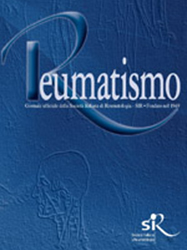Eosinophilic granulomatosis with polyangiitis: sequential use of mepolizumab following rituximab for inadequate asthma control despite vasculitis remission

All claims expressed in this article are solely those of the authors and do not necessarily represent those of their affiliated organizations, or those of the publisher, the editors and the reviewers. Any product that may be evaluated in this article or claim that may be made by its manufacturer is not guaranteed or endorsed by the publisher.
Authors
We report the case of a 54-year-old woman with antineutrophilic cytoplasmic antibody-negative eosinophilic granulomatosis with polyangiitis presenting with mononeuritis multiplex, intestinal hemorrhage, cardiomyopathy, fever, and worsening asthma symptoms. She was initially treated with steroids and cyclophosphamide but eventually required rituximab to control a vasculitis flare. However, her asthmatic symptoms did not improve, despite attaining vasculitis remission. Symptoms abated only after the treatment transition to mepolizumab. After a 1-year interval, there were no further episodes of asthma exacerbation and no requirement for systemic steroid therapy. This report reinforces the use of rituximab for induction and maintenance of remission in patients with eosinophilic granulomatosis with polyangiitis and predominant vasculitic manifestations, whereas mepolizumab demonstrated better control of the persistent eosinophilic manifestations, ensuing sustained remission and improved quality of life.

This work is licensed under a Creative Commons Attribution-NonCommercial 4.0 International License.
PAGEPress has chosen to apply the Creative Commons Attribution NonCommercial 4.0 International License (CC BY-NC 4.0) to all manuscripts to be published.











